- Home
- Essential Knots
- Figure of 8 Knot
The Figure of 8 Knot: A Step-by-Step Stopper Knot Guide
In a Nutshell...
The figure of eight knot is a fundamental and reliable stopper knot used in sailing to prevent a rope (or 'sheet') from slipping through a block, fairlead, or cleat. Its key advantage over the simpler overhand knot is that it's much easier to untie after being put under strain. The knot is formed in the shape of an '8', and its larger profile provides a more secure stop. To tie it, simply create a loop, pass the working end over the standing part, and then through the bottom of the loop.
Table of Contents
Why the Figure of 8 is a Sailor’s Best Friend
As an offshore sailor well past the first flush of youth, I’ve seen my share of things go wrong at sea. One of the most common—and avoidable—issues is a runaway sheet. A genoa sheet that gets pulled through its block can quickly become a serious problem, especially in a gust of wind or heavy weather. This is where the figure of eight knot comes into its own. It's the knot I use most often, and for good reason. It's simple, highly effective, and critically, it's not a pain to untie when the job is done.
A Step-by-Step Guide to Tying the Figure of 8 Knot
Learning to tie this knot is one of the first skills you'll acquire as a sailor. Follow these steps and you'll have it mastered in no time.
- Form a Bight: Hold the rope in your hands. Create a loop, or 'bight', by folding the rope over on itself.
- Cross Over: Take the 'working end' (the end of the rope you'll be using to tie the knot) and pass it over the 'standing part' (the rest of the rope) to create a pretzel-like shape.
- Tuck & Tighten: Bring the working end back underneath the loop you just created and feed it through the hole from the bottom up.
- Dress the Knot: Gently pull both the standing part and the working end to tighten the knot. Ensure the two legs of the '8' are neat and not twisted. A well-dressed knot is a strong and reliable knot.
Practice these steps a few times, and you’ll be tying it blindfolded.
Here it is in words and pictures:
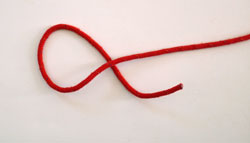
Stage 1
Form a bight with the working end under the standing part.
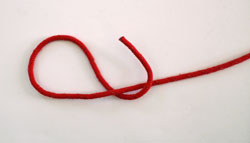
Stage 2
Pass the working end over the standing part.
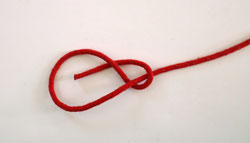
Stage 3
Tuck the working end into the loop from back to front.
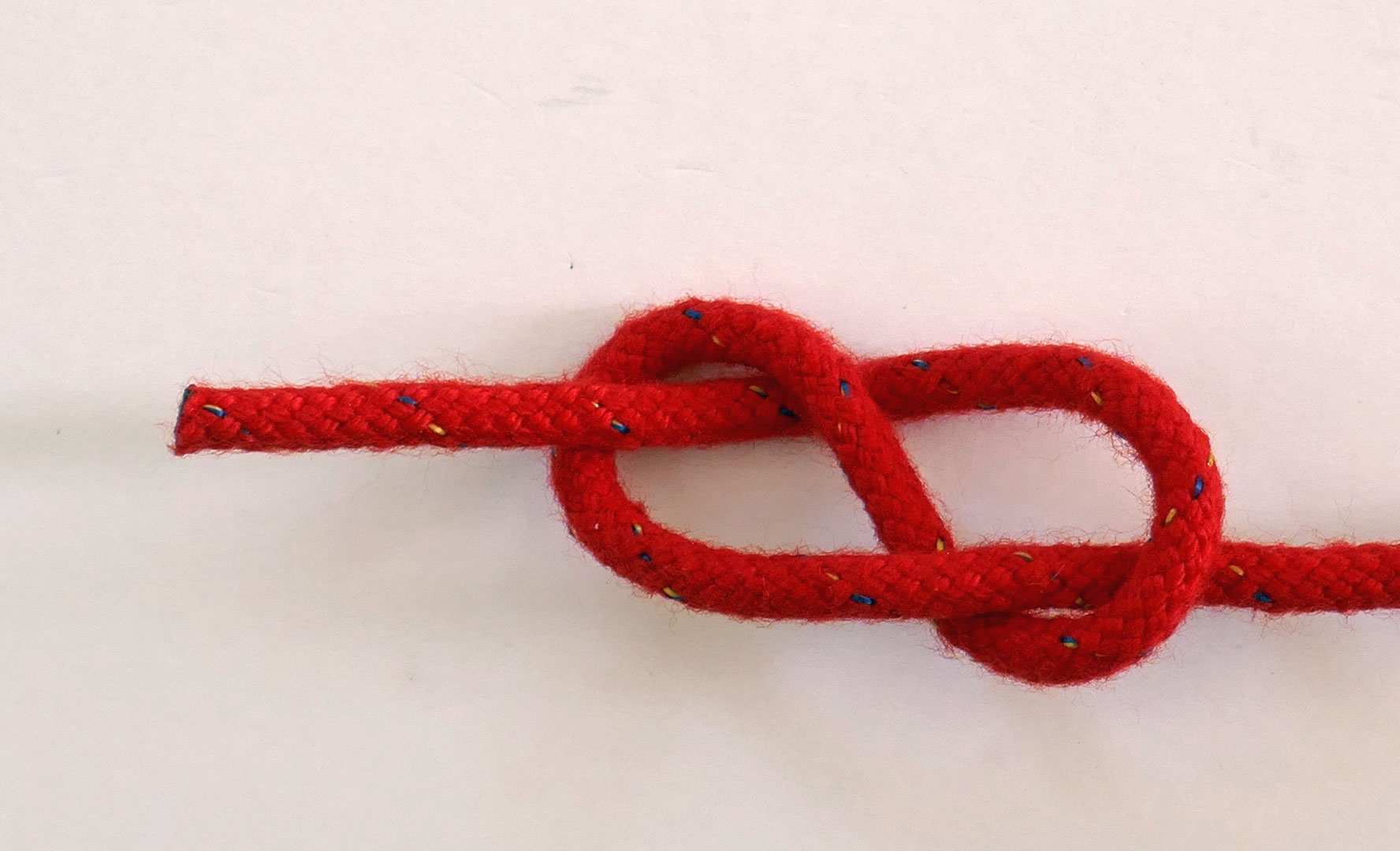
Stage 4
Pull the working end through the loop.
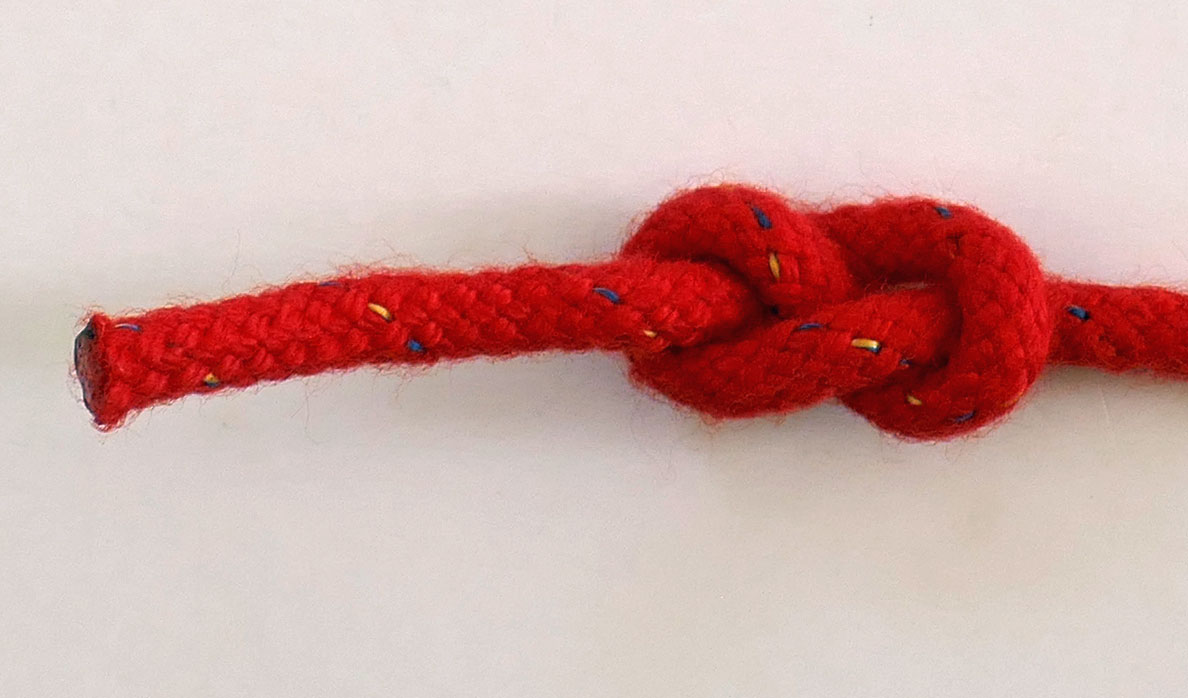
Stage 5
Pull the knot up tight - you've just tied a Figure of 8 Knot!
Other Stopper Knots
The Overhand Knot
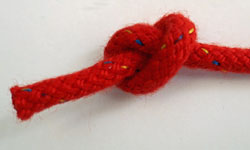
Nothing more than a Half-Hitch with nothing in it. The Overhand Knot is the easiest knot to tie and useful as a simple stopper knot but can be difficult to untie.
Otherwise of little use on its own, it forms a vital part of other sailing knots such as the Round Turn & Two Half-Hitches.
The Overhand Knot is also known as the Thumb Knot.
The Double Overhand Knot
An extra turn gives the Double Overhand Knot more bulk and hence increased effectiveness as a stopper knot. Here's how to tie it...
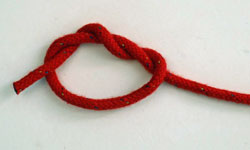
Stage 1
Two twists, rather than the single twist of the less bulky Overhand Knot.
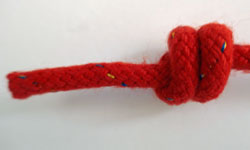
Stage 2
Pulled up tight the Double Overhand Knot is as effective a stopper knot as the Figure of 8 Knot, although it's more difficult to untie.
Figure of 8 vs. Other Stopper Knots
While the figure of eight knot is my go-to, it’s not the only stopper knot. As mentioned above, the overhand knot is the simplest, but it’s notorious for becoming impossible to untie after being loaded. The monkey's fist is great for throwing, but it's not a practical stopper for general use. The following table compares the most common stopper knots.
| Knot Name | Reliability | Ease of Untying | Common Use |
|---|---|---|---|
| Figure of 8 | Excellent | Easy | Stopper knot on sheets |
| Overhand Knot | Good | Difficult | Temporary knot, quick fix |
| Monkey's Fist | Good | Difficult | Weighted end for a line |
The Figure of Eight Knot is a crucial knot for any sailor. It is just one of many important knots you'll need to master, all of which you can learn about in our ultimate resource, A Sailor's Guide to Essential Knots & Splicing.
Why Spinnaker Sheets & Guys Should NOT Have Stopper Knots
The primary reason you don't put a stopper knot on spinnaker sheets & guys is for safety & control. Unlike a genoa or mainsheet, which are almost always under tension, a spinnaker is a large, powerful sail that can create immense force very quickly.
In an unexpected gust or during a critical maneuver, a spinnaker can pull a boat over, a dangerous situation known as a broach.
To prevent this, the fastest & most effective solution is to immediately "blow" the sheet, which means releasing the line entirely. This instantly de-powers the sail, bringing the boat back under control. If a stopper knot were on the end of that line, it would get jammed in the block or cleat, preventing this critical safety maneuver.
The risk of losing the sheet overboard is considered a minor inconvenience compared to the risk of a broach.
A Personal Involvement...
I was involved in such an event from a much closer position than I would have voted for, when crewing as foredeck hand for two pals who jointly owned the boat—a Westerly GK29. Decision-making was done by this two-man committee which, as you will imagine, often lead to interesting situations. We were hammering downwind under the kite on the Devon side of the River Tamar in a club regatta when the roll started. It got worse, much worse, rapidly approaching 'death roll' status. I was on the foredeck shouting 'advice', which acheived little more than add to the general pandemonium in the cockpit "Let go the ******* sheet!". That did it.
You've guessed it, there was a stopper knot—which jammed in the turning block. We were now in real trouble, hurtling towards a large yellow buoy* and in danger of getting very wet, at best. Just before we hit it, a knife was produced and the sheet was cut. We still clobbered the buoy though, which miraculously turned out to be a polystyrene one, so no serious damage was done.
With the TRSC Safety Boat in close attendance we eventually recovered the spinnaker, and peace was restored. Hey ho...
* Incidentally, these buoys are known to have fibreglass-attracting magnets in them.
By Dick McClary, RYA Yachtmaster Offshore & member of the Yachting Journalists Association (YJA)
Frequently Asked Questions (FAQs)
Is the figure of eight knot the same as a stopper knot?
Is the figure of eight knot the same as a stopper knot?
Yes, the figure of eight knot is a specific type of stopper knot. The term 'stopper knot' is a general category for any knot used to prevent a line from slipping.
When should I use a figure of eight knot?
When should I use a figure of eight knot?
The most common use is to put a stopper on the end of a sheet, halyard, or other line that runs through a block or fairlead. It prevents the line from accidentally running out.
Is it safe to use a figure of eight knot for climbing?
Is it safe to use a figure of eight knot for climbing?
The figure of eight is a critical knot in climbing, but it is tied differently, typically as a 'figure of eight on a bight' or a 'figure of eight follow-through' to create a secure loop. The stopper knot is not for climbing applications.
Sources
Recent Articles
-
Modern Boat Electronics and the Latest Marine Instruments
Dec 20, 25 05:27 PM
Should sailboat instruments be linked to the latest boat electronics as a fully integrated system, or is it best to leave them as independent units? -
Hans Christian 43: Classic Bluewater Cruiser & Liveaboard Sailboat
Dec 10, 25 04:37 AM
Explore the Hans Christian 43: a legendary heavy-displacement, long-keel sailboat. Read our in-depth review of its specs, design ratios, and suitability for offshore cruising and living aboard. -
Planning Your Sailboat Liveaboard Lifestyle: An Ocean Sailor's Guide
Dec 06, 25 05:18 AM
Seasoned sailors share their methodical risk analysis for planning a secure Sailboat Liveaboard Lifestyle, covering financial, property, and relationship risks.












